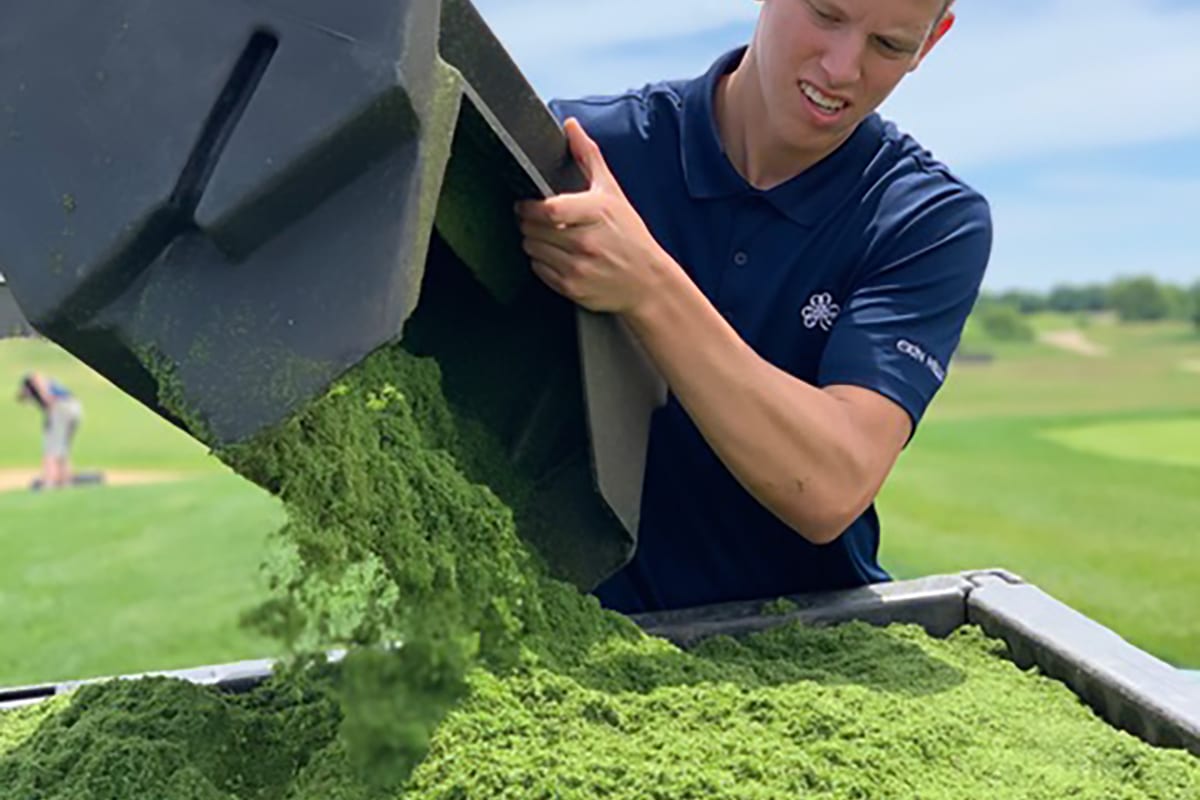See the latest in golf turfgrass practices that keep Erin Hills looking and playing like one of the top courses in the nation.

Collecting Clippings for Improved Guest Experience
by Zach Reineking
Golf course superintendents often describe their process of decision making as part science, part art, and part instinct. Yes, most superintendents have advanced degrees in turf science or horticulture and are well versed in the research from the past 40 years, but often that is not enough. This knowledge is crucial, but the variability of golf course locations, climates, and soil types prevent a “one size fits all” template to manage turfgrass at a high level. This is where art and instinct can play a more significant role in deciphering the many variables that impact the decision-making process that superintendents face daily. Art and instinct are not perfect, and science can provide repeatable results, improving the overall turf quality and golfing experience. The Turfgrass Department at Erin Hills strives to provide a premium experience by introducing science into the daily operation. Measuring clippings removed from putting surfaces is one way that science can assist with decision making while improving turf quality.
Greens are mowed daily at Erin Hills, and the quantity of clippings fluctuates based on multiple variables. The weather has a significant impact on clipping volume, but so do the management practices that are implemented on putting surfaces. Irrigation, fertilizer, and plant growth hormones can increase or decrease the quantity of clippings removed from the plant daily. A high volume of clippings equates to vigorous growth, healthy putting surfaces but slow greens speed. Conversely, a low volume of clippings relates to faster greens but weaker turf that may not be able to handle foot traffic and extensive play. Finding the sweet spot between healthy turf and fast speeds is a goal for many superintendents.
Erin Hills’ Turfgrass Department uses the science and data collection of measuring clippings to achieve this goal. Clippings are measured daily from six greens on the course. Green speed is also measured on these same six greens with the use of a Stimpmeter. After a year of data collection, the Turfgrass Department can correlate a specific volume of clippings to a desired green speed while maintaining turf health. Inputs and daily maintenance practices such as double cutting and rolling can be adjusted appropriately to accomplish the desired result daily. The outcome is fewer inputs on putting surfaces, healthy turf, consistent playing surfaces daily, and a better experience for our guests.
Join Our Email Club
Receive the latest updates on Erin Hills news and promotions.


